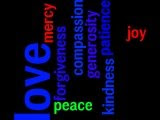 Readings: Jer 33:14-16; 1 Thess 3:12-4:2; Lk 21:25-36
Readings: Jer 33:14-16; 1 Thess 3:12-4:2; Lk 21:25-36
It’s always good to periodically remember that the whole scope of the Old Testament and the People of Israel is based on the promises of God: Abraham is promised a land and a people; the people are later promised a just shoot of Jesse, who would become a Messiah, as spoken through the prophet Jeremiah in today’s first reading. The people’s response to those promises is to hope in their eventual fulfillment. Those are the dual engines that drive the Old Testament motor: the promises of God and the people’s hope for their fulfillment. That sets the background for the New Testament, which is also built on promises and hope. Jesus
promises the Kingdom of God; Jesus’ Resurrection is a promise to us of our own future resurrection. That is what ultimately we hope for.
When you think about it carefully, hope is one of the greatest driving forces in the Christian faith. Advent is the season to focus on hope. We focus through the lens of the Old Testament hope for a Messiah. From there we broaden out into much greater hopes—the hope for salvation, for an intimacy with God, for a love of God and for the other smaller hopes for our lives—for health and friendship and safety for our families.
Hope as a virtue fascinates me. I first got interested in it when I was doing my doctoral research. One of the writers I was studying was the Jesuit, Fr. William Lynch. He had written a very powerful book entitled, Images of Hope. His ideas were considered groundbreaking and insightful, not by theologians, but by psychiatrists and psychotherapists. Fr. Lynch was writing from a unique background and perspective. He himself had once been hospitalized with an acute case of schizophrenia that required months of treatment. He was only able to recover from that by recapturing a sense of hopefulness in his life—a sense that there was something positive to hope for. He describes in very poignant and eloquent words how much a sense of hopelessness lies at the source of so much mental illness. There were two key insights that dominate his observations about hope. The first is that true hope is a cooperative venture. You can’t escape from hopelessness without somebody else’s help. Hope always involves more than one person. True hope is a shared venture. His second insight is that true hope is only achieved through images and the use of the imagination. Because the most important step in once again achieving mental stability and health is through the individual’s construction of a new self-image, and that requires the use of one’s imagination and the unique images it shapes.
Those two insights might help us in our celebration of the season of Advent, which we begin today. To foster and nourish our own hopes, especially our spiritual hopes, let’s do it in conjunction with community and friends. Let us enter more  fully and more alertly into our community prayer in this season. Secondly, let’s allow our imaginations to play a little more than usual during Advent. Advent as a liturgical season has some rich symbols: the Advent wreath, the O Antiphons, the feasts of Sts. Nicolas and Lucy and Our Lady of Guadalupe, and of course the glorious music of the Advent season. Let’s let our imaginations play a little more than usual to savor this season to the fullest.
fully and more alertly into our community prayer in this season. Secondly, let’s allow our imaginations to play a little more than usual during Advent. Advent as a liturgical season has some rich symbols: the Advent wreath, the O Antiphons, the feasts of Sts. Nicolas and Lucy and Our Lady of Guadalupe, and of course the glorious music of the Advent season. Let’s let our imaginations play a little more than usual to savor this season to the fullest.
Sunday, November 29, 2009
Fr. Matthias Neuman's Homily for the 1st Sunday of Advent
Subscribe to:
Post Comments (Atom)




No comments:
Post a Comment